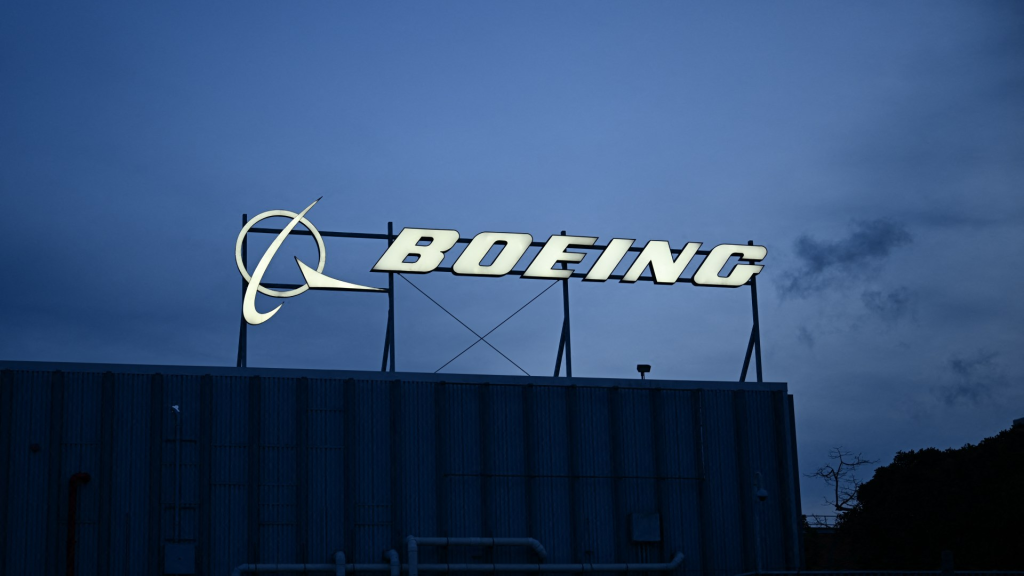Boeing bosses are staring down the barrel.
The twists and turns of the past week paint a picture of managers badly wrong-footed by the depth of fury among workers who tossed out a 25% pay increase deal and launched strike action.
“They probably didn’t think that we had enough people for the strike,” Kushal Varma, a Boeing mechanic. “But this is a movement of people who are willing to put their livelihoods on the line to get what’s fair.”
With little time to regroup, and pressure mounting, management enters a fresh week of talks to contain the crisis at the $97 billion U.S. aerospace champion.
A week ago, Boeing executives believed they’d done enough to secure the pay deal with around 33,000 workers in Washington state, the heart of the company’s global manufacturing operations, according to two people directly involved in the talks that have played out at Seattle’s upscale Westin hotel.
The company’s initial pay increase offer had been about 12%, said the people, who requested anonymity to discuss confidential and unreported details about the horse-trading, though that number gradually crept up during the weeks of negotiations.
But in an 11th-hour concession on Saturday, Sept. 7 to clinch the support of union leader Jon Holden and seal what they expected to be a swift resolution to the dispute, Boeing executives hiked the offer significantly to 25% and pledged to build the company’s next commercial jet in the state, the people added.
“Much of it came together in the last four or five hours,” Holden said after the tentative agreement was announced on Sept. 8, adding that he and Boeing management had worked until “the wee hours”.
Boeing and the union hailed the deal as “historic” because of the record headline wage hike for the company and the first-of-its-kind plane commitment. It was a spectacular failure.
Three days later, 94% of members of Holden’s International Association of Machinists and Aerospace Workers (IAM) rejected the offer and 96% voted to strike.
The details of the deal’s collapse also reveal how trust between Boeing and union leadership has eroded, complicating talks due to resume in coming days.
Two days after Boeing announced its offer, as union member frustration seeped into the media, commercial planes chief Stephanie Pope wrote an open letter to workers, saying the company had held nothing back and this was the best deal they would get.
CEO Kelly Ortberg followed up with an open letter the next day, telling workers that voting against the deal would send them down a path “where no one wins”.
Rather than rallying the troops, the letters backfired, according to four workers who said many union members saw them as ultimatums.
“I thought they were unprofessional and threatening,” said Josh King, a quality control inspector at a Boeing Seattle factory.
Boeing finance chief Brian West acknowledged the disconnect with staff.
“We had an unprecedented temporary agreement that was unanimously endorsed by union leadership. And over the last few days, it became very clear, loud and clear, with our union members that that offer didn’t meet the mark,” he told a Morgan Stanley conference at the beachside Ritz-Carlton in Dana Point, California on Friday.
In a conversation with a small group of investors on the sidelines of the event, West added that while Boeing had focused on the future plane pledge, workers were more concerned about their current wallets, according to a person who was present and requested anonymity as the discussion was private.
The 25% general wage increase offered was in line with gains won by other sectors such as autoworkers. Nonetheless, many Boeing workers have struggled to make ends meet over the years; since the last full wage deal in 2008, factory wages have lagged inflation, while healthcare and living costs have leapt.
UNION LEADER IN SPOTLIGHT
Boeing, which dominates the global planemaking market with European rival Airbus, has been wrestling with production and safety crises since two deadly 737 MAX plane crashes in 2018 and 2019.
The latest upheaval was sparked by a door panel flying off a near-new 737 MAX plane in midair in January, prompting the exit of former CEO Dave Calhoun and a 30% drop in the company’s share price this year.
As the new crunch labor talks loom, union chief Holden also finds himself under the microscope.
On the Boeing side, boardroom trust in the IAM leader has been knocked by the reversal, which saw his members roundly reject a contract he negotiated and supported, according to the two people involved in the talks. His endorsement had appeared to be a much-needed win for Ortberg and Boeing, whose shares jumped almost 4% on Monday, Sept. 9 as investors cheered.
Holden and Boeing chief negotiator Michael Fitzsimmons and their respective teams of about a dozen apiece had spent several weeks since July broadly discussing terms, the people said.
In the last three weeks, the negotiations accelerated and intensified with the two teams moving into rooms at the Westin Hotel and holding talks several times a day, they added.
Ortberg dropped in to the hotel on the evening of Saturday, Sept. 7 to confirm the details with Holden, according to the sources. The deal was finally agreed shortly after 2 a.m. and announced hours later.
On the union side, Holden also faces opposition from within his ranks, with some hardline members furious at him for endorsing an offer that most workers opposed, opening a rift at a critical point in the talks, five IAM members said.
“You know, you don’t trust him. You put faith in the guy … and then we pretty much feel like he’s failed you,” said Mike Toman, a striking worker protesting outside a factory making Boeing’s best-selling 737 jet.
It was the first time in three decades that the IAM’s local leader had recommended accepting a contract, raising the ire of many workers. Posts on union social media channels described him as a “sellout” and called his negotiation “shameful”.


